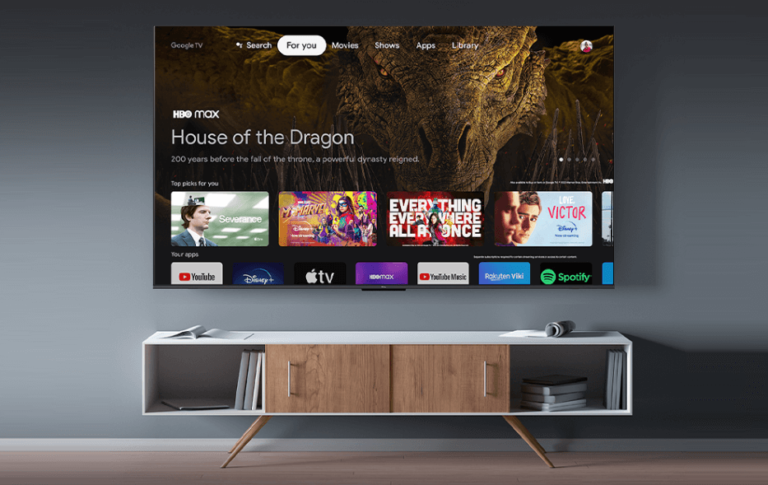Running Safari for Windows: Challenges and Workarounds
Safari for Windows was Apple’s optimistic program to bring its stylish and fast web browser into the Windows galaxy. Apple stopped officially supporting Windows when Safari 5.1.7 was released in 2012; thus, developers and testers have few choices for verifying compatibility.
For web developers on Windows devices, this created problems, especially when trying to adjust cross-browser capabilities and performance on Safari. Safari remains the market-leading browser globally and is pre-installed on all Apple devices as the default browser. Safari also employs its own exclusive WebKit rendering engine that is different from Chrome or Firefox. Due to these differences, Safari testing is essential.
This change provides a robust understanding of the technical, practical, and legal issues involved with running Safari for Windows OS and will also provide pragmatic solutions for developers and testers who need to connect the Apple ecosystem to Windows platforms.
The Evolution of Safari
In 2003, Apple made a change to macOS, making Safari the new default browser and fading Internet Explorer out of existence. Safari was built using the WebKit rendering engine and has been focused on speed, efficiency, and good integration with the Apple ecosystem.
Since then, it has continued to be available natively to macOS and iOS, incorporated new privacy safeguards, and adapted to changes in the web standards. Further reaching broader audiences in 2007, Apple developed Safari for Windows, but that effort was fairly short-lived.
Safari for Windows was finally retired in 2012 due to its low acceptance and Apple’s preference for its platforms. Safari is the third most essential browser for developers due to its market dominance and distinctive approach to web technologies, even though it supports only a few platforms.
Why Run Safari on Windows?
The default web browser on Apple devices is called Safari, so while testing for web compatibility and performance, it is the primary focus. Developers and QA testers working in a Windows environment frequently correct issues in which testing websites or web apps on Safari is impossible because there has not been a native version of the browser for Windows since 2012. Regardless of these limitations, it is necessary to run Safari or replicate its behaviors on Windows for leading reasons:
- Test for compatibility across browsers: Websites ought to function reliably in all major browsers. The WebKit rendering engine, used only by Safari among the major browsers, allows Safari to uniquely process and render CSS, JavaScript, and layout functions that are not produced in the same way as Chromium user agents; therefore, testing with it is needed to provide optimizations necessary to be reliable to macOS and iOS users
- iOS user experience simulation: As Safari is closely linked with iOS, developers creating mobile-responsive designs must check how their sites look and function on Apple devices. Utilizing Safari or simulators on Windows assists in detecting UI problems early on.
- QA in Windows-focused work settings: Numerous QA teams function in environments based on Windows. Using remote or emulated methods to run Safari enables the validation of features and functionality without the need for actual Mac devices.
- Resolving issues specific to Safari. Specific Safari-only issues like viewport management, input actions, or CSS oddities cannot be accurately assessed using different browsers. Testing directly in Safari, even through Windows methods, aids in fixing these problems.
- Affordable testing: Keeping exclusive Mac hardware just for Safari testing can be expensive. Simulating or accessing Safari remotely on Windows platforms provides a cost-effective option, particularly for smaller teams.
- Business and compliance obligations: Certain organizations need to test applications on all major browsers, including Safari. Facilitating Safari compatibility within a Windows environment assists in fulfilling compliance and stakeholder requirements.
- Simplified development process: Testing Safari directly on Windows without the need to switch systems accelerates the development process and enhances productivity for teams not using macOS.
- User support and bug reproduction: Windows developers must figure out how to reproduce the environment when users report problems with Safari to properly diagnose the issue. Using workarounds to run Safari makes this possible.
Challenges of Running Safari on Windows
After Apple formally ended support for Safari on Windows with version 5.1.7, developers and testers using Windows systems have faced various difficulties in accessing or testing Safari. These problems arise from compatibility restrictions, the absence of official assistance, and security worries. Overcoming these challenges is essential to ensuring reliability across different browsers. Here are the key difficulties:
- Inability to support contemporary web functions
Due to the legacy Windows version lacking full support for HTML5 features, CSS Grid, modern JavaScript (ES6+), or ARIA roles, developers are unable to consistently test contemporary Safari functionality with it. - Security threats from utilizing obsolete software
Using and installing outdated Safari on Windows puts systems at risk of significant security flaws, since the browser is not maintained or safeguarded from online threats. - Variations in rendering engine functionality
WebKit, the engine that powers Safari, keeps progressing on Apple platforms. The obsolete Windows version fails to incorporate changes in rendering behavior, resulting in considerable discrepancies in UI/UX testing results. - Lack of access to developer tools in recent versions
Developers forfeit access to Safari’s updated Web Inspector features when utilizing outdated versions. These tools are crucial for troubleshooting and analyzing performance, network behavior, and adaptable design. - Inconsistent emulation via alternative tools
Emulators or browser add-ons that assert they mimic Safari’s functionality frequently fall short of accuracy. They do not accurately replicate genuine WebKit rendering, resulting in incorrect positives or overlooked issues. - Difficulty in automating tests
Automated testing can be difficult because Selenium WebDriver and most current test automation tools require the latest browser drivers. Automating Safari on Windows is essentially impossible without the help of Apple, which can usually only be avoided through some remote use of Mac machines or with a cloud solution. - Legal and technical problems with macOS virtualization
In addition to being technically difficult, virtualizing macOS on Windows to access Safari is against Apple’s software licensing agreements unless it is run on Apple hardware.
See also: 5 Benefits of Biotech Skids for Manufacturing
Tips for testing Safari on Windows
As everyone knows, testing websites on Safari on Windows may be challenging when it doesn’t function natively. However, we can still accomplish dependable and efficient testing in the Safari browser with the correct resources and procedures. Even when development and QA operations are not done directly on macOS, testers can keep cross-browser quality in many long-term workflows by adhering to these best practices:
- Check on all versions of Safari: Test not just against the latest version of Safari, but all versions that are still in use on both iOS and macOS. Cloud platforms usually provide access to different versions of Safari for extensive testing.
- Avoid browser-specific code whenever possible: Follow web standards and rely on feature detection instead of browser detection. This will help in reducing the risk of bringing in Safari-related errors and ensure that it is the same way in the future.
- Evaluate mobile Safari using device emulators or actual devices: iOS Safari may operate differently from macOS Safari, particularly in terms of touch interactions, viewport resizing, and hardware support. Cloud platform emulators or real-device testing reveal these disparities.
- Automate testing with Selenium and remote WebDriver: Use Selenium or other testing frameworks with their WebDriver endpoints to run automated test scripts from the Windows environment when using services that provide Safari on remote Macs.
- Make use of responsive design features built into other browsers: Tools like Chrome DevTools can simulate the screen sizes and orientations of Apple devices, which helps identify layout issues before Safari verification, but they cannot substitute real Safari testing.
- Track bugs particular to Safari through community channels: Keep up with WebKit release notes, GitHub problems, and web developer forums to learn about known Safari flaws and rendering irregularities that could affect your project.
Current Workarounds and Alternatives
Due to Apple’s discontinuation of the Windows version of Safari, developers and testers no longer have an official, real way to access and test a Windows version of Safari. While none of the following approaches is a perfect substitute for using Safari, they do allow more reliable testing, debugging, and validation of web applications. The most reliable alternatives and options are as follows:
Utilize Safari 5.1.7 (Old version) on Windows.
This is the final official Safari version issued for Windows. Despite being obsolete and unsafe, it provides a narrow understanding of how ancient Safari versions display content. Nonetheless, it does not meet modern web standards, rendering it inappropriate for comprehensive testing.
Virtualize macOS on Windows utilizing virtual machines (VMs)
Developers can utilize tools such as VirtualBox or VMware to operate macOS on Windows and use Safari. This approach is difficult to configure, tends to be unreliable, and breaches Apple’s EULA unless it is executed on authentic Apple hardware.
Accessing a Mac remotely (MacStadium, AWS EC2 Mac Instances)
Leasing or accessing a Mac system remotely enables evaluating Safari using screen-sharing applications or SSH. Services such as MacStadium and Amazon EC2 Mac instances enable this without the need to own a Mac.
Frameworks for web development featuring Safari emulation
Certain browser development tools (e.g., Chrome DevTools) offer restricted Safari emulation features like iPhone/iPad display rendering or touch interaction simulation. Although it may not be entirely precise, it aids in identifying layout or responsiveness problems early in the development process.
Cross-browser testing using WebDriver on cloud grids
Selenium and various test automation tools are capable of integrating with remote Safari browsers available on cloud testing services like LambdaTest. This enables complete automation of test cases without requiring a local Safari setup.
The future of Safari testing is more dependent on cloud platforms, removing the hardware and OS limitations typically linked to Apple’s ecosystem. LambdaTest, a cloud-based cross-browser testing platform, provides real-time browser testing environments for Safari on authentic macOS systems.
LambdaTest is an AI testing tool that enables developers and QA teams to utilize multiple Safari versions for desktop and mobile, guaranteeing precise rendering and functionality across over 3000 real devices. This is particularly beneficial for Windows users, who are unable to run Safari directly.
Additionally, LambdaTest leverages AI-driven test automation to accelerate QA workflows and improve test accuracy. Its AI capabilities help intelligently identify flaky tests, prioritize test execution, and suggest optimizations, reducing manual effort.
Automated test scripts can run across multiple browsers and devices simultaneously, while AI-powered test analytics provide insights into failure patterns and performance issues. This combination of automation and AI ensures faster, smarter, and more reliable testing for modern applications.
PWAs and WebKit preview in Chrome
While developing Progressive Web Apps, testers can replicate certain WebKit functionalities in Chrome to obtain a limited preview. This is beneficial in the initial phases of development.
Conclusion
In conclusion, the discontinuation of Apple’s support, compatibility problems, and security concerns make running Safari on Windows extremely difficult. However, developers can test Safari compatibility in a Windows environment using browser cloud solutions like LambdaTest, using remote Mac machines, or using rigid testing strategies. In those situations where there is not a perfect solution, these scaling, legal, and practical solutions can still have cross-browser compatibility and make a superior experience for users on Apple platforms and other platforms.






